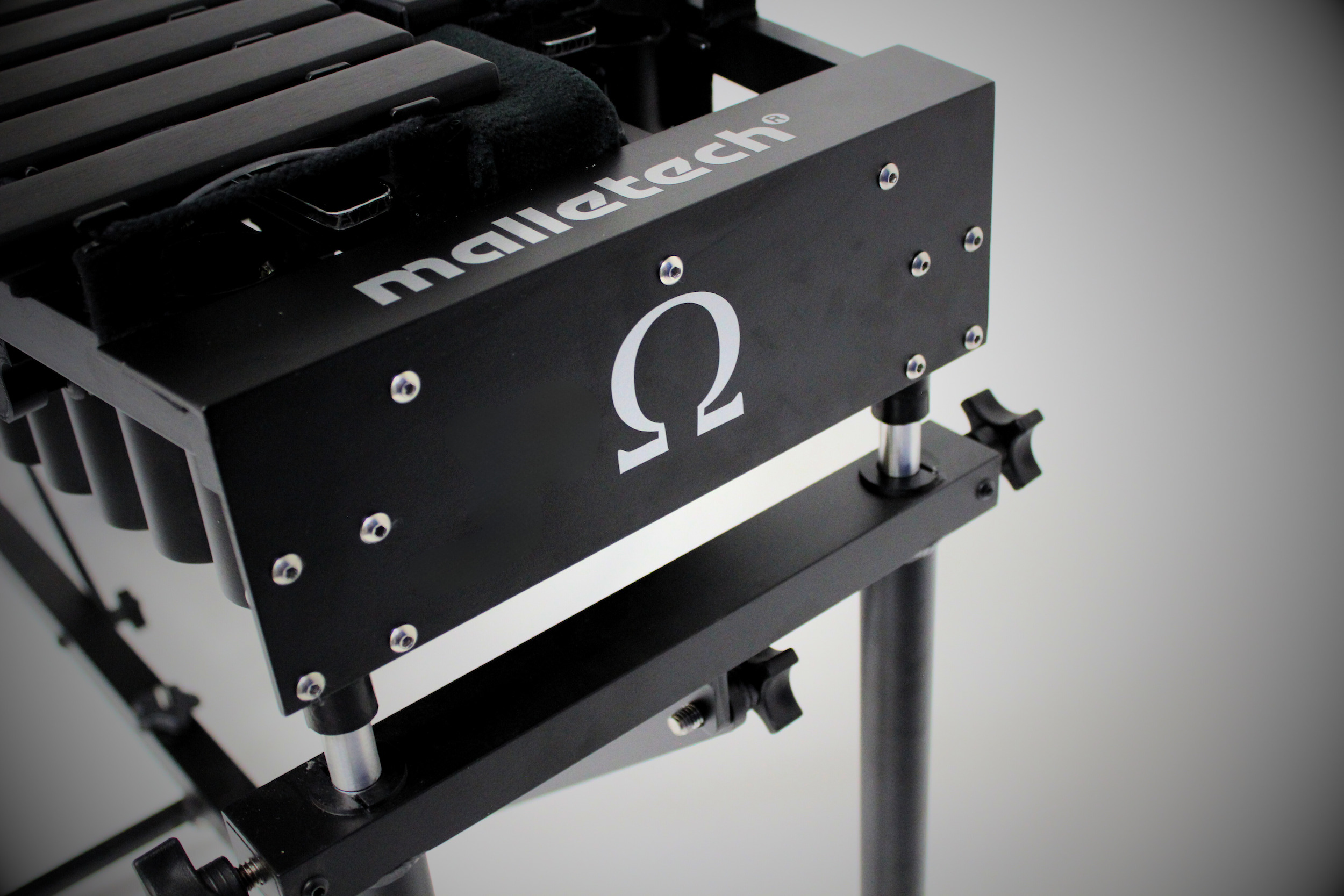☰

Newly Redesigned
Frame redesigned in 2024, eliminating more than twenty aluminum parts and replacing them with 50% lighter 3D-printed carbon fiber/composite parts.
Resonator Bridge Supports
Resonators rest on new "suspension bridge" system, trimming the rail length and eliminating contact between the resonators and frame ends.
Total Lock Wheels
Includes Four Total Lock wheels (OmegaAir - 2" wheels, OmegaVibe - 4" wheels)
Quiet Is Our Forte
The quietest vibraphone frame you'll find anywhere. Featuring nuts-and-bots assembly, ensuring a lifetime of rattle-free playing.

"Formula 6" bars
Our vibraphones feature our proprietary “Formula 6” bar geometry/alloy, coupled with Malletech’s exclusive harmonic tuning process, producing the sweetest chords and strongest projection possible.
Standard Offerings
Vibraphones come standard with black or silver bars, finished with our proprietary "M-kote" eco-friendly finishing system.
Custom Colors
One of six anodized custom colors (red, purple, green, orange, gold, blue) available with Custom or Custom Pro package.

Only Round Resonators
Malletech only uses powerful, clean, musical round tubes. We will never produce a rectangular, oval or flared resonator. Other shapes are less expensive to manufacture, but their strong, random overtones produce inconsistent volume, muddy bass and an “out of focus” sense of pitch. Round tubes only resonate and reinforce the fundamental and natural overtone series.
Fixed or Tunable?
Our vibraphones come standard with factory-fixed resonator plugs. Fully tunable resonators are available with a Pro or Custom Pro package.

Patent-Pending Vertical Dampening
Perhaps the biggest development that we are most proud of is the “holy grail” of vibraphone design – vertical dampening. This has been sought after by vibraphone designers, including Malletech, for over 100 years. Now, we’ve finally succeeded in designing our patent-pending, dual-spring, vertical dampening system that travels up and down, rather than the traditional arc created by damper bars connected to pivoting arms. With vertical dampening, the damper bar contacts both naturals and sharps at the same moment.
Progressive Dampening Bar
Our patented concave bar first barely touches the bars with the outer pointed edge, close to the non-vibrating node (nearer to the bar cord). As you lift the pedal, the patented shape of the gel progressively swells toward the more active ends of the bars. Dampen quickly, or feather infinitely like a violin bow.
Dual Spring Towers
Players can easily tweak the wetness/dryness of the “pedal up” sound by adjusting the dual springs. Simple, evenly balanced dampening right out of the box - top to bottom, sharps to naturals.

Secure strap
Malletech uses straps (like you would find on your luggage) instead of an antiquated rod and hook system to connect your pedal to the damper bar. The pedal will never disconnect during a gig.
Completely Customizable
Fully adjustable for leverage, height, angle and damper bar release speed, providing a personalized, completely customizable relationship between player and instrument.
ErgoPedal
Our ErgoPedal upgrade (available with Pro or Custom Pro packages) adds another player-friendly 20-degree further tilt to the pedal.

Proprietary Wing System
We’ve refined the unique vibrato system that Malletech is known for. Our vibrato wings glide elliptically over the tops of the resonators, rotating on frictionless ball bearings. This ensures a velvety smooth vibrato when in use, and a full pure resonance when retracted/not in use. The installation of the wings has been simplified to reduce any chance of jamming or misalignment of the system.
Manual, pedal-controlled vibrato
The OmegaRTV offers real-time, manual, pedal-controlled vibrato, allowing you to accelerando/decelerando your vibrato, or add it at the end of a sustained chord.
Final Thoughts

“The noisy, unexpressive, motorized vibrato used on all vibraphones since its invention in 1916 was never musically inspiring to me. Many vibraphone players seemed to agree, since they chose to create their music without use of the “vibra” part of the vibraphone. Even the best instruments had motors and pulsar fan assemblies that were frequently too noisy to use in ballads or in classical music — exactly where you would want to selectively add vibrato.” — LHS

